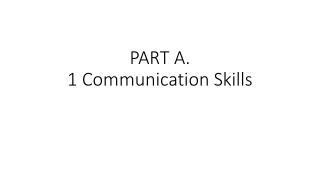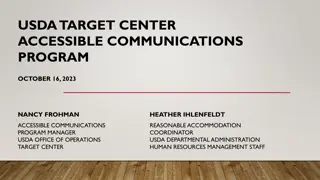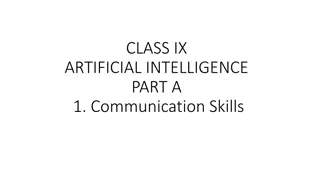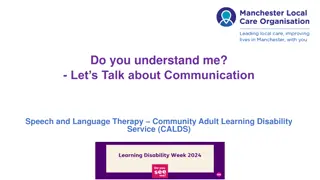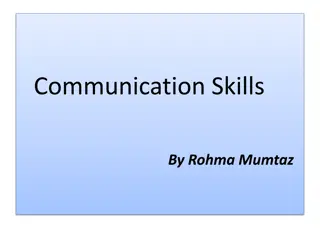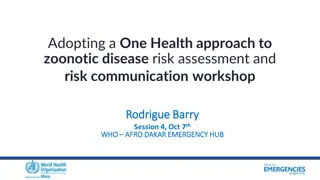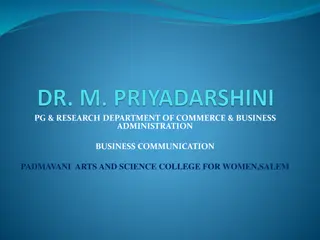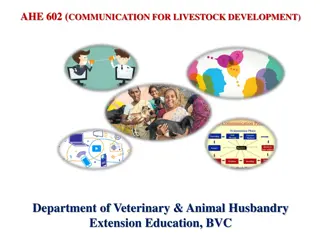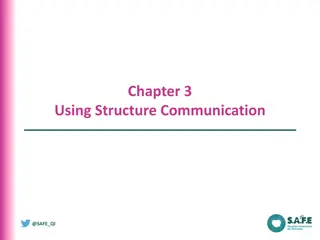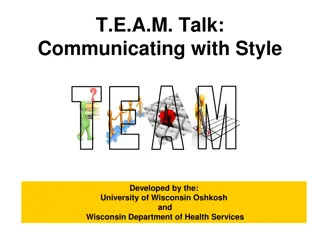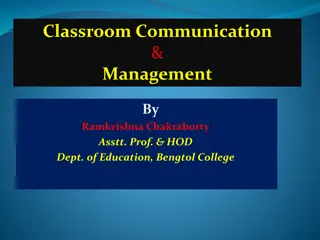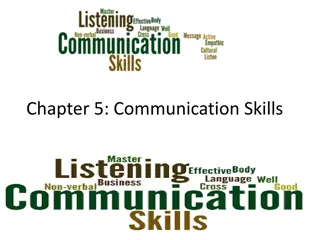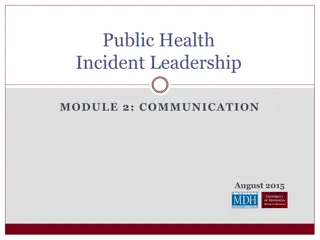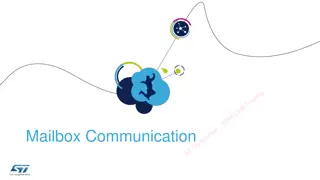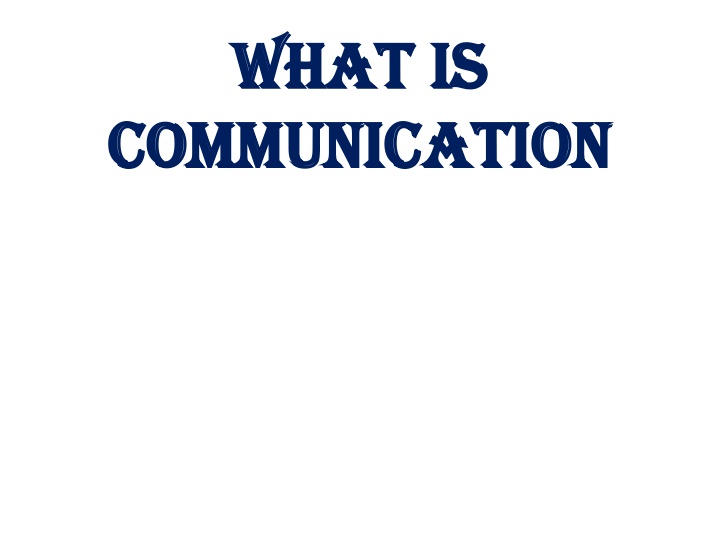
Communication Process and Importance in Organizations
Learn about the essential elements of communication, including its definition, types, process, and significance in organizational settings. Explore how communication facilitates the transfer of information, ideas, and messages between individuals, fostering understanding and promoting a conducive work culture within organizations.
Uploaded on | 2 Views
Download Presentation

Please find below an Image/Link to download the presentation.
The content on the website is provided AS IS for your information and personal use only. It may not be sold, licensed, or shared on other websites without obtaining consent from the author. If you encounter any issues during the download, it is possible that the publisher has removed the file from their server.
You are allowed to download the files provided on this website for personal or commercial use, subject to the condition that they are used lawfully. All files are the property of their respective owners.
The content on the website is provided AS IS for your information and personal use only. It may not be sold, licensed, or shared on other websites without obtaining consent from the author.
E N D
Presentation Transcript
What is What is Communication Communication
Communication From the Latin word Communicare (to share) or Communis (to make common) -Act of transferring/transmitting & receiving ideas, information and message from one person to another -Two way process between SENDER & RECEIVER -A dynamic process, continuous process -Information, ideas & messages are transmitted through mutually understood signs -It is the creation and exchange of meaning
Objective of Communication A. Deliver a message, idea & information B. Create Understanding Definitions- Keith Davis- Communication is a process of passing information and understanding from one person to another Louis Allen- Communication is a bridge of meaning. It involves a systematic and continuous process of telling, listening and understanding.
2 Basic types of Communication- Oral & Written The Process of Communication- Communication is the active process of sending and receiving messages through verbal & non verbal means including speech (words & language), writing and graphical representations (pictures, maps, chart), signs & signals and behaviour. -The process of communication involves various stages/ components. - It is related with sharing & understanding of information.
The components in the process of Communication- 7 basic components Sender- the person who send the message Encoding- the mental preparation, the process of organizing ideas/ information into words, symbols and other form of expression. Message- the physical form of the idea, information & message (Meaning lies in the receivers mind not in the message) Channel- the medium & method of delivering the idea Receiver- the person who receives the message Decoding- the process of attaching meaning to sender s message understanding/ comprehending the message Feedback- response or reply to sender s message.
Importance of Communication in organization Creation of conducive environment- conducive environment of understanding can be created Promote Work Culture- successful & smooth running of the organization to promote goals and policies Basis of managerial function- helpful in management of organization, planning, organizing, leading, directing, motivating & controlling Builds human relationship- two way communication promotes mutual co-operation and understanding. Job satisfaction & enrichment- overcomes illusion and misunderstanding, enhances morale and job satisfaction. It facilitates decision making by providing necessary information in time.
Basic forms of communication One Way Communication- absence of feedback Sender and receiver are isolated not interdependent Examples- TV News, Radio, Movies etc.
Two Way Communication Effective/Active feedback from receiver Receiver understands the message in the same sense and spirit that the sender intended.
Verbal & Non-verbal Communication Verbal- Communication through spoken & written word 2 types- Oral & Written
Transmission of message with the help of facial expression, body posture, eye contact, clothing, silence etc. Communication through sending and receiving wordless cues. It includes the use of visual cues such as body language (kinesics), distance (proxemics) and physical environments/appearance, of voice (paralanguage) and of touch (haptics). It can also include the use of time (chronemics). More than 65% human communication is through non-verbal cues.
Formal & Informal Communication Communication inside the official set up regarding official matters It is structured on the basis of hierarchy, authority & accountability Information can move both horizontally & vertically Examples- Departmental meetings, conferences, circulars, company news, interviews etc.
Informal Communication Communication of the members of the organization regarding unofficial matters It takes place outside the formally prescribed & planned network or channel It is spontaneous & off the record communication between peers, colleagues, classmates etc. No set rules & regulations and no particular direction.
Intrapersonal & Interpersonal communication
Intrapersonal communication Internal dialogue, thinking, self-talk of an individual It may be clear or confused depending upon the individual s state of mind.
Interpersonal Communication It is the communication among two or more persons It signifies positive, personal and internal relationship between the persons involved
Group Communication Two or more persons interact with each other It is extension of interpersonal communication The group must be formed intentionally or voluntarily to communicate on an important matter- committees, team members etc.
Public Communication It is a speech given by one person to a large group of people It is one way communication because there is no scope to give immediate response.
Mass Communication It is the process of communication to the general public at large through different mass medias such as television, films, internet, publications etc.

